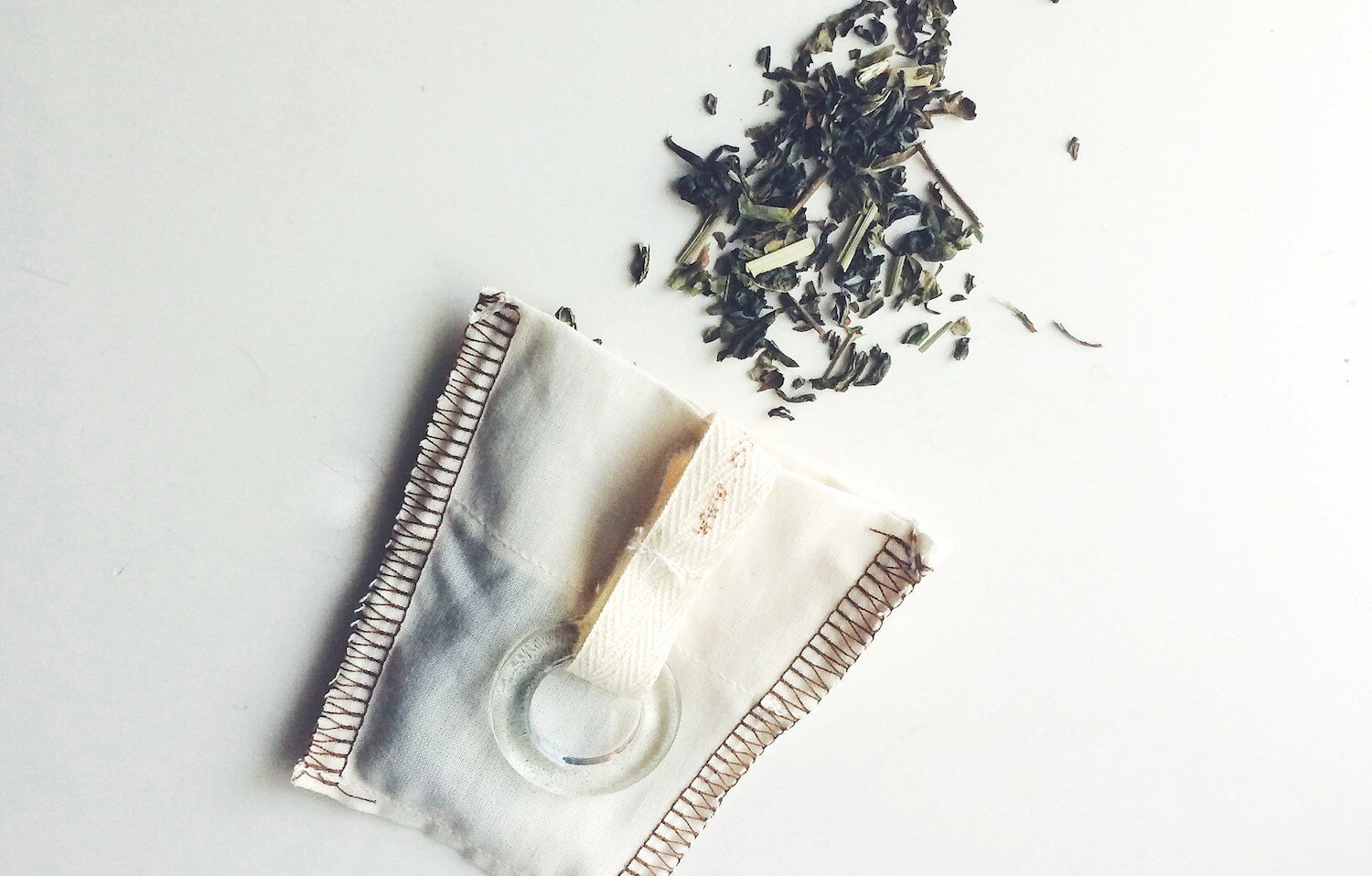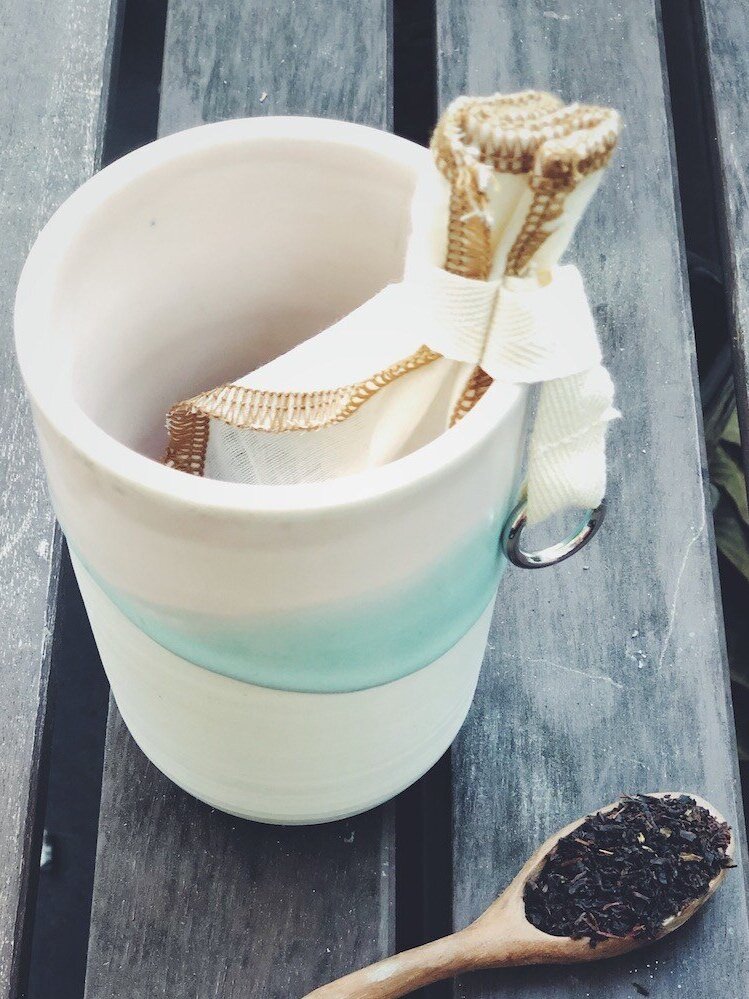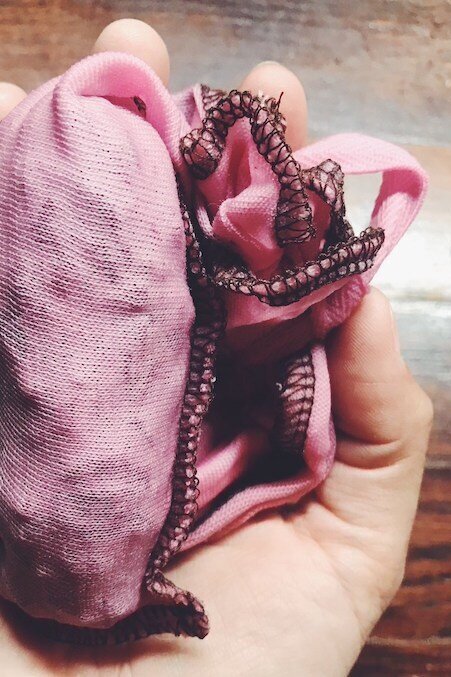A guide to DIY tea blends
The world loves tea. Besides water, people drink more tea than any other beverage. It’s no surprise, since tea has been around for more than 2000 years—some say much longer.
Since tea is really just the dried leaves of a plant, it doesn’t take modern processes to produce an herbal blend and steep it in hot water. Whether you’re using the dried leaves of the tea plant, or an infusion of other plants, it’s actually pretty simple to make it yourself with a few of your favorite flavors.
This guide walks you through the basics to make your own signature tea blend.
In this article
First—what is tea?
To be totally honest, I was surprised to find out that all tea comes from a single plant—except many herbal blends (more on those in a minute). Tea, by definition, is a drink made from the dried leaves of the camellia sinensis plant—A.K.A the “tea plant.”
Green tea? It’s from the camellia sinensis plant. And Oolong? It’s from the camellia sinensis plant. White tea though? Camellia sinensis. Same with Darjeeling, Ceylon, Earl Gray, English Breakfast, and...you get the picture.
So what’s the difference? The difference is where the plant is grown and how the dried leaves are processed. Different regions have different climates and soil, which naturally produces a slightly different plant. And of course, humans have long chosen their favorite crops to replant and reproduce. This is a key way we get teas (and wines and coffees) with different flavor profiles.
And local growers have developed their own methods for drying and processing the leaves, resulting in leaves of different colors and flavors. Pretty cool, huh?
Herbal “tea” isn’t tea—but we call it that
As for herbal “tea”—it’s not technically tea if it doesn’t contain the key ingredient. Herbal blends are typically infusions of fruits, flowers, herbs, and spices. Think peppermint, lavender, camomile flowers, orange, ginger, and so on.
Armed with this basic knowledge, your next step is to decide what you want to use in your blend.
Yes, there are other kinds too
If you know your teas, you’re probably thinking “what about fermented teas, and Rooibos and...” Yes, there are other plant varieties and blends we commonly call tea. And tea growers, producers, and aficionados are always finding new ways to produce, brew, and enjoy them. It’s more than we’ll dive into in this article, but there’s a fun and nerdy tea world out there if you care to explore.
Building a tea blend
You don’t actually need anything other than dried tea leaves. If that’s your favorite way to drink it, then we recommend you find the highest quality dried leaves you can find in the varietal you prefer.
If you want to build your own blend, then let’s talk about flavor profiles.
What’s a flavor profile?
Do you prefer smooth, spicy, floral, fruity, or herby? Are you a chamomile fan or do you go for mint? Maybe raspberry is your jam? (Pun intended, sorry.)
To build your blend in the flavors you like, you need to choose the ingredients that work with the flavor profile.
Here are a few examples.
For a fruity blend: Try dried berries, citrus peel, pear, or apple.
For something spicy: Grab cinnamon sticks, dried ginger, cardamom, or cayenne.
For an herby brew: Go for dried flowers such as chamomile, echinacea, or sage.
For floral or minty: Dried mint is an obvious choice here, and you have several mint varieties to choose from. You can also go for lavender, rosemary, or rose.
Select the ingredients you want to try from the grocery store, farmer’s market, or your own backyard garden. Then, it’s time to dry them.
Drying your ingredients
To turn fresh fruits or herbs into a tea blend, you’ll have to dry it all out. That’s not the same as cooking it—though it does involve heat. To get everything dry, you need to remove the natural water.
If you have access to a dehydrator, that’s great! But you don’t need one. For drying herbs, we’ve got a simple 101 over on our recipes page.
For other ingredients, like lemon or orange peel, you can use the low-temp oven method described over at The Spruce Eats.
Getting your mix right
Once you’ve got your dried ingredients, it’s time to put together your mix. Here’s where your math skills will come in handy. We know that you want 1-2 teaspoons of your dried mix for a cup of tea. So, you can scale up from there to decide how much tea you want to store for later use.
One cup has 48 teaspoons in it—about 25-30 cups of tea. So, to keep things simple, we’ll work with one cup in our examples. But you can adjust to the amount that works for you.
A caffeinated brew
If you want a tea tea, you’ll need those dried camellia sinensis leaves. Yes, you can grow the plant yourself, but it’s not as common as the other ingredients you’ll work with. So, you may need to purchase dried tea leaves for this. Choose the tea you like best. You can purchase bulk dried tea leaves in many stores or online.
Keep in mind that some are strong than others. Green and Oolong varieties play nicely with more delicate herbs. Black teas may work better with stronger flavors, like citrus, mint, or cinnamon.
You can also blend the tea varieties too for a mix of black, green, and herbs, for example.
Ratio of tea to herb
In general, we like a 2:1 ratio of tea leaves to herbs. For one cup, that means ⅔ cup of tea leaves and ⅓ cup of herbs. But you should experiment.
A few to try:
DIY Lady Gray: Earl Gray tea mixed with dried citrus.
Minty Green: Add dried mint to green tea. I love a hint of chamomile here too.
Chai Spice: Mix black tea with cardamom, ginger, and cinnamon.
Herbal blends
Herbals are a little different and there’s no magic formula. Simple choose the ingredients you like and blend them in the strength you like. But we’ll get you started with a few examples.
Try our Hibiscus tea recipe. We’ve got it put together for sun tea in a pitcher. But you can store the dried blend for hot te too.
Or try one of these eight options such as ginger tea or herbal chai.
How to store your dried tea
We love a mason jar—but any airtight container will do the trick, especially if you’ll drink the tea regularly. The key is that you don’t want tea leaves to get any oxygen—it will change the flavor since oxygen is one of the key ways tea gets processed.
If you think you’re tea will sit for a long time, consider vacuum sealing or a container that you can hermetically seal. Keep this in mind if you plan to harvest your summer herbs and give tea to friends and family for the holidays!
According to Tea Epicure, you need to keep your sealed tea from light, odors, and heat too. A cool, dry, dark spot is best. It’s not as simple as storing in the fridge or freezer. Check out their blog about how to store tea.
From the blog:
“Storing tea can be very simple. If you keep your tea in an airtight container and then store your container in a dark, cool, dry place free from strong odors, you will likely consume it before any degradation in aroma or taste occurs. However, tea is constantly deteriorating, very slowly, as soon as the leaves are picked off the plant.”
Brew methods for loose tea
It’s finally time to make yourself a cup! What are the best methods for brewing loose tea? As with most things, you have options.
For hot brew
For tea, as coffee, it’s all about gathering the loose bits, allowing them to sit in hot water for a couple of minutes, and then removing them from the water without any leftover particles floating around. To do that without purchasing pre-bagged tea, try one of these methods.
A tea sock is like a coffee sock, made the right size and weave for tea leaves. For dried herbs approximately the same size as tea leaves, use a tea sock. For larger herbals, try the infusion filter. For cold brewed tea, there’s a larger filter for that too!
Lots of people use a tea ball to gather loose tea and steep. This typically resembles tongs with a mesh ball at the end. Simply place your tea inside, close the ball tightly, and steep.
A tea strainer is more like basket brewed coffee. You place the loose tea in the basket and let it sit in hot water, then remove the basket and compost the leaves. You can also use a cheesecloth or similar cloth strainer to pour your brewed tea through and capture the loose bits.
FOR COLD BREWED TEA
Like cold brewed coffee, to cold brew tea, you let the tea steep in cold water rather than hot. This method allows you to easily brew a full batch of tea without heating the stove. Some say this method produces a richer flavor as the herbs and leaves steep more slowly.
There’s a tea sock made just for this method!
You can use the tea sock to make sun tea as well. This allows you to apply some heat, depending on how sunny and warm the day is.
Again, you can use a strainer for this too. We don’t recommend the back type for cold brewed tea. But a cloth strainer works fine. It’s like using a sock, but at the end of the process rather than the beginning.
We hope you find this guide useful! Have suggestions? Send them our way!
Get your tea gear
Pick up a pack of CoffeeSock filters specially-made for hot or cold-brewed tea and herbal infusions. Plus we partner with several eco-friendly businesses to bring you Dona loose leaf chai or herbal teas and Lost Pines Yaupon tea. Both brands come alone or packaged with CoffeeSock filters.
Grab an 8oz, double-walled insulated glass mugs to round out your tea brewing kit. And there’s gift sets and wrapping for the tea lovers on your list, too!




